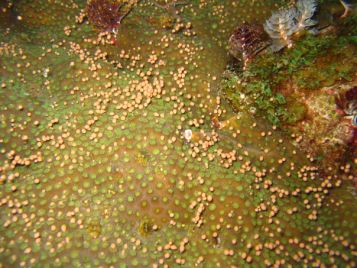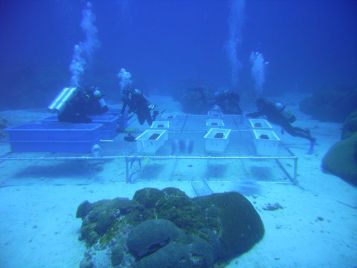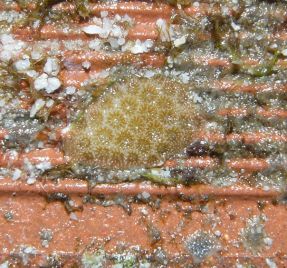On one night per year, at a specific point in the lunar cycle, one of the most extraordinary reproductive events on the planet unfolds as hundreds of millions of broadcast spawning corals release their trillions of gametes into the waters of the tropical seas. Each species spawns on a specific night within the lunar cycle, typically from full moon to third quarter moon, and in a specific time window after sunset. This accuracy is essential to achieve efficient fertilization in the vastness of the oceans.
We study how corals link spawning behavior to environmental cues, such as the solar, lunar and seasonal cycles. These all work independently and when they intersect spawning is triggered. The different components include;
The diurnal clock
sets the time after sunset when spawning occurs
The lunar clock
sets the specific night when spawning will occur
The seasonal clock
sets the month when spawning will occur
Amplifiers
and other components tighten the timing window
Methods
We use a broad spectrum of approaches ranging from bucket and duct tape based field manipulations to sophisticated long term coral culture and manipulation to obtain our samples. Most work is done at field stations in the Pacific. Our more recent work uses ambient solar lighting combined with artificial lunar lighting to examine how the lunar cycle impacts timing processes.
In some experiments we test whether changes in an environmental parameter, such as light, or exposure to a chemical compound, changes spawning behaviour. Our usual assay is to isolate RNA from samples then do whole transcriptome sequencing to determine how the manipulation changed gene expression on a global scale, but we also use proteomics and sometimes qPCR.
Current field sites include Heron Island and Orpheus Island on the Great Barrier Reef, and the NMMBA in Southern Taiwan. A variety of field techniques are utilized including SCUBA (nitrox, hot mixes, tri), rebreathers, ROVs and submarines. All field workers have advanced dive training.
We also have projects exploring coral ecology and the interaction between newly recruited corals (babies!), algae, and herbivorous vertebrates and invertebrates. That project utilized a unique research platform that we built at a depth of 80' in the Flower Garden Banks National Marine Sanctuary. The platform allowed us to set up long term coral recruitment experiments under controlled conditions (see photo below).
Key References
- Wuitchik, D.M., Wang, DZ., Pells, T.J., Karimi, K., Ward, S. andf Vize, P.D. (2019). Seasonal temperature, the lunar cycle and diurnal rhythms interact in a combinatorial manner to modulate genomic responses to the environment in a reef-building coral. Molecular Ecology, https://doi.org/10.1111/mec.15173
- Oldach. M.J., Workentine, M., Matz, M.V., Fan, T-Y., and Vize, P.D. (2017). Transcriptome dynamics over a lunar month in a broadcast spawning acroporid coral. Molecular Ecology, 26; 2514-2526
- Brady, A.K.,Willis, B.L. and Vize, P.D. (2016). Lunar phase modulates circadian gene expression cycles in the broadcast spawning coral, Acropora millepora. Biological Bulletin 230; 130-142
- Hilton, J.D., Brady, A.K., Spaho, S.A. and Vize, P.D. (2012). Photoreception and signal transduction in corals; proteomic and behavioral evidence for cytoplasmic calcium as a mediator of light responsivity. Biological Bulletin 223: 291-299.
- Brady, A.K., Snyder, K. and Vize, P.D. (2011). Circadian cycles of gene expression in the coral, Acropora millepora. PLoS One 6(9): e25072
- A.K.Brady, J.D. Hilton and Vize, P.D. (2009). Coral spawn timing is a direct response to solar light cycles and is not an entrained circadian response. Coral Reefs 28; 677-680.
- Vize, P.D. (2009) Transcriptome analysis of the circadian regulatory network in the coral, Acropora millepora. Biological Bulletin 216: 131-137.


